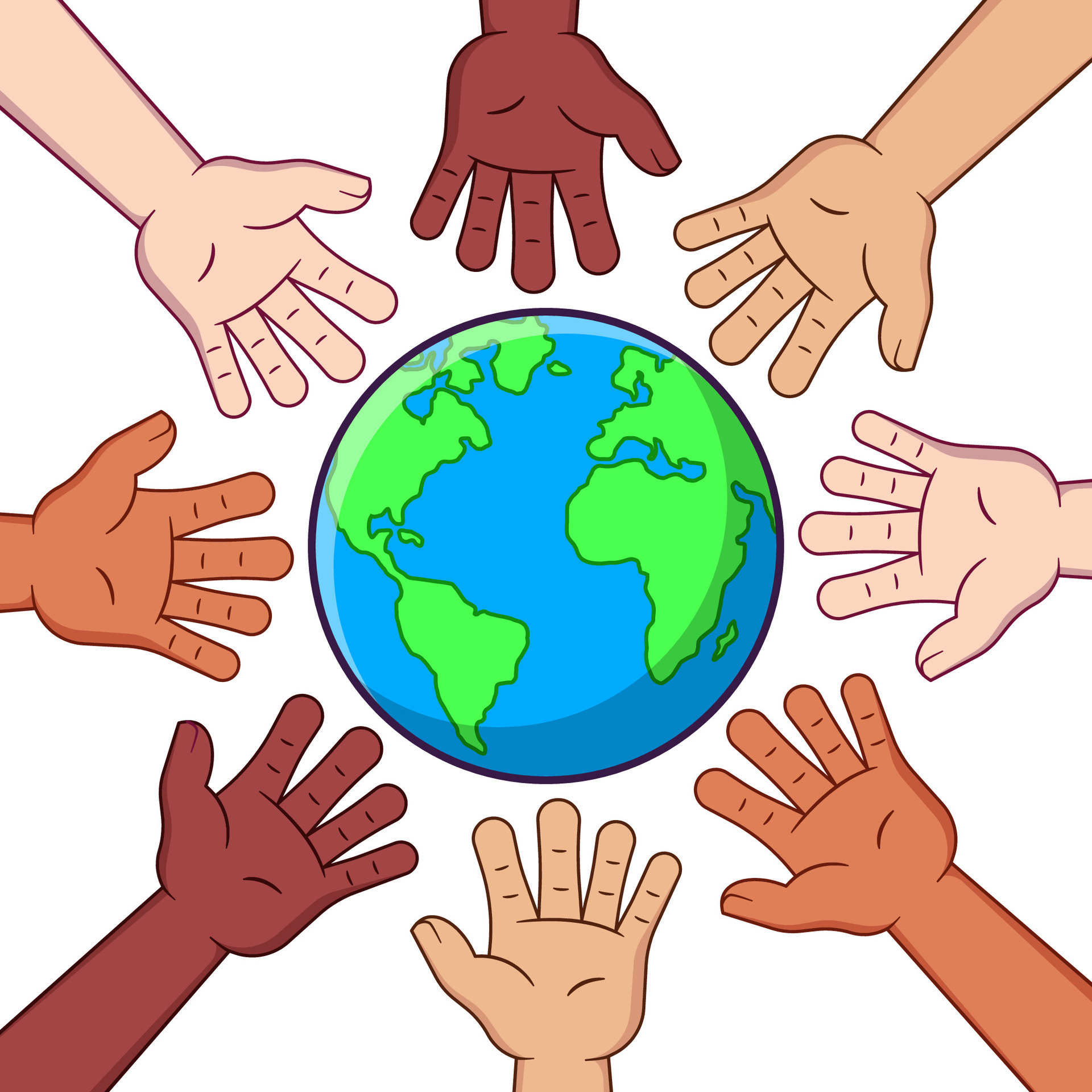In an increasingly interconnected world, the celebration of cultural diversity resonates profoundly through art and imagery. Among the myriad forms of artistic expression, clip art—often seen as simplistic—can articulate complex narratives about identity, community, and resilience. The “cultural diversity hands” clip art serves as an evocative symbol, illustrating the myriad hues of humanity while posing an intriguing question: How can something as simple as a hand crossing borders bolster our understanding of cultural dynamics?
The significance of hands in art is manifold. They are not merely appendages; they are conduits of emotion, action, and identity. In cultural diversity clip art, hands symbolize not only the physical traits of different races and ethnic groups but also represent the values, traditions, and ideologies that diverge and converge across global cultures. Utilizing various skin tones, artistic styles, and gestures, these representations celebrate the uniqueness that each culture brings to the global dialogue. But herein lies a challenge: Can visual representations genuinely capture the complexities embedded within cultural identities, or do they risk oversimplifying rich narratives?
This challenge pushes the boundaries of interpretation. A still image begs the question of movement, intent, and history. Each hand in these illustrations does more than just exist in a static pose. They open avenues for discourse around intercultural relationships, social justice, and community solidarity. The mosaic of colors and styles suggests a world where diversity is not only acknowledged but cherished. This leads to another inquiry: How do we foster an environment in which these representations can contribute to genuine understanding rather than lead to tokenism?
The use of cultural diversity hands as clip art transcends mere decoration—it can serve educational purposes. In classrooms, for instance, such imagery can be catalysts for discussions on race, heritage, and global citizenship. As educators showcase these graphics, students have the opportunity to engage with the visual and ask questions about symbolism, significance, and perspective. This educational potential is an invaluable asset. Yet, it also presents a daunting obstacle. If we utilize these representations, how can we ensure that we do so mindfully and respectfully, recognizing the depth of cultures beyond their visual manifestations?
To illustrate the profound nature of this discourse, consider the variety of gestures that hands can convey. A raised fist signals strength and resistance, a flat palm can indicate peace or offering, while hands reaching out imply connection and empathy. The juxtaposition of these gestures in cultural diversity clip art encapsulates the spectrum of human experiences—pleasure, struggle, celebration, and mourning. As people engage with these images, they become participants in a larger narrative. However, participation also requires accountability. Are we prepared to dissect our own biases and inclinations when interpreting what these hands may signify?
Furthermore, the sheer universality of hands as a motif brings forth another layer of inquiry. While hands transcend language barriers, do we risk promoting a homogenized view of cultural diversity by employing generalized images? This concern demands diligence among artists, educators, and activists alike. Crafting an inclusive aesthetic requires understanding the backstories behind cultural symbols. This urges us to question: Are we adequately representing minorities, or do we inadvertently reinforce stereotypes by relying on clichéd imagery?
A critical dimension of this discussion revolves around representation. The act of using cultural diversity hands as clip art can elevate previously marginalized voices. When designed with intention, these graphics can spotlight underrepresented communities, celebrating their contributions and narratives. However, this potential can only be realized if the creators of such art actively collaborate with the cultures they aim to represent. This raises essential considerations regarding authority and authorship within creative productions. Whose stories are being told? Are the principles of cultural appreciation adhered to, or are we navigating the treacherous waters of cultural appropriation?
Moreover, technology plays a pivotal role in how these cultural diversity representations proliferate. The digital age allows for rapid dissemination of ideas and imagery, promoting accessibility and engagement. Yet, the speed at which this occurs can dilute the depth of understanding. Typically, clip art is consumed in a matter of seconds, reducing complex cultural identities into simplistic icons readily available for use. This acceleration brings forth a question worth pondering: How do we reconcile the immediacy of digital media with the necessity for meaningful and respectful engagement with cultural representations?
Finally, as we delve into the realm of cultural expression through the lens of clip art, it becomes increasingly apparent that engagement requires more than just visual consumption. Participatory art, community projects, and grassroots initiatives are vital avenues through which individuals can explore and celebrate cultural diversity tangibly. By stepping beyond two-dimensional representations, communities can engage in dialogues, workshops, and events that bring humanity’s multifaceted identities alive. This leads to a hopeful question: How can we transform our appreciation of cultural diversity from passive observation into active participation?
In conclusion, cultural diversity hands clip art represents far more than basic illustrations. They invoke thought-provoking inquiries about representation, agency, and community engagement. Embracing the symbolic power of hands in diverse hues prompts us to scrutinize how we depict culture in our artistic expressions. As we continue this exploration, it is crucial to remain vigilant, ensuring that we foster inclusivity, understanding, and genuine respect towards the rich tapestry of human experiences. Are we ready to rise to the occasion, creating a world that respects and celebrates cultural narratives rather than merely glossing over them?
